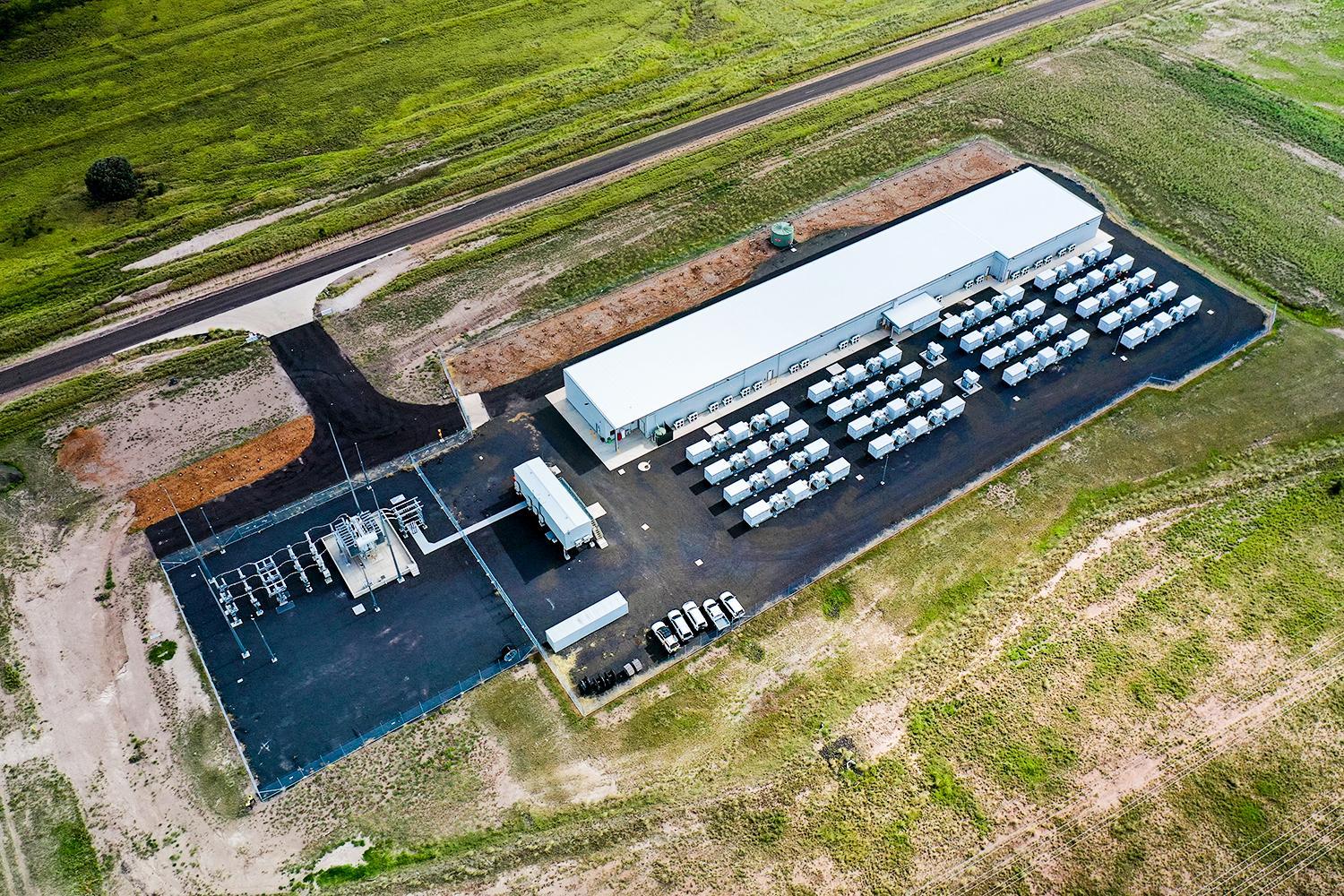


What future developments can be expected in the integration of solar power and big batteries in Australia's energy market
Powering Up: How Big Batteries are Boosting Large-Scale Solar Projects in Australia
With the global shift towards renewable energy picking up pace, Australia is leading the way in the integration of big batteries into large-scale solar projects. This critical move is not only enhancing the efficiency and reliability of solar energy but also contributing to a more sustainable future. The incorporation of large-scale battery storage systems into solar farms is a game-changer for the Australian energy market, addressing intermittency issues and ensuring a steady supply of green energy.
Understanding the Role of Big Batteries in Solar Projects
Big batteries, or large-scale battery storage systems, are pivotal in managing the variability of solar power. They store excess energy generated during peak sunlight hours and release it when the demand is high or when sunlight is insufficient. This capability is crucial for maintaining a stable and reliable energy supply, especially given Australia's goal to increase the percentage of renewable energy in its power grid.
Benefits of Combining Big Batteries with Solar Farms
The synergistic combination of big batteries and solar farms brings numerous advantages to Australia’s energy landscape:
- Increased Energy Security: By providing a dependable energy reserve, big batteries ensure that power is available even during peak demand times or when solar generation is low.
- Grid Stability: Batteries contribute to grid stability by offering ancillary services such as frequency control and voltage support, crucial for the smooth operation of the power system.
- Reduced Reliance on Fossil Fuels: The enhanced efficiency of solar farms with battery storage leads to lesser dependency on coal and gas-fired power plants, aligning with environmental sustainability goals.
- Cost-Effective Energy Solution: Over time, the cost of lithium-ion batteries has been decreasing, making large-scale storage solutions more financially viable and resulting in lower energy costs for consumers.
Key Technologies Behind Big Batteries
The most common technology used for big batteries in Australia is lithium-ion, favored for its high energy density and efficiency. Alternatives such as flow batteries are also being explored for their potential to store larger amounts of energy for longer periods.
Case Studies: Australia’s Trailblazing Solar and Battery Projects
Australia has several pioneering solar plus storage projects that exemplify the power of this combination:
- The Hornsdale Power Reserve: Often referred to as the “world’s biggest battery,” it has significantly improved grid stability and lowered energy prices in South Australia since its inception.
- The Gannawarra Solar Farm and Energy Storage System: A groundbreaking project that demonstrates the seamless integration of a large-scale battery with a solar farm, enhancing energy storage capability.
- The Victorian Big Battery: One of the largest batteries in the world, aiming to boost grid stability and support Victoria’s transition to renewable energy.
These projects highlight the substantial impact large-scale batteries have on the effectiveness and reliability of solar energy, setting a precedent for future developments.
Implementing Big Batteries Into Your Solar Project: Practical Tips
For businesses and developers looking to add big batteries to solar projects, here are some actionable tips:
- Conduct a Feasibility Study: Assess the technical and economic viability of integrating a big battery into your solar project.
- Understand the Regulatory Framework: Familiarize yourself with the local regulations and incentives for solar and storage projects to ensure compliance and maximize benefits.
- Choose the Right Technology: Based on your project’s specific needs, select the battery technology that offers the best balance of performance, longevity, and cost.
- Partner with Experienced Providers: Engage with companies that have a track record of successfully implementing large-scale battery projects to leverage their expertise.
- Plan for Scalability: Design your project with the future in mind, considering the potential for expanding the battery storage capacity as technology advances and costs decrease.
Looking Ahead: The Future of Solar and Battery Integration in Australia
The integration of big batteries into solar projects is a crucial step towards a renewable energy-dominated power grid in Australia. With ongoing advancements in battery technology and decreasing costs, the potential for large-scale solar plus storage projects is immense. The Australian energy sector is poised for a transformation, with big batteries playing a vital role in stabilizing the grid, reducing energy costs, and contributing to environmental sustainability.
| Project Name | Location | Capacity | Key Benefits |
|---|---|---|---|
| Hornsdale Power Reserve | South Australia | 150MW / 193.5MWh | Grid stability, reduced energy prices |
| Gannawarra Solar Farm and Energy Storage System | Victoria | 25MW / 50MWh | Enhanced storage capability |
| Victorian Big Battery | Victoria | 300MW / 450MWh | Boost in grid stability |
Final Thoughts
The successful integration of big batteries into solar projects is propelling Australia towards a renewable energy future. This innovative approach not only improves the efficiency and reliability of solar power but also contributes to a sustainable and economically viable energy landscape. As technology evolves and cost barriers lower, the future of solar plus battery projects in Australia looks bright, promising a cleaner, greener, and more resilient energy system.
Remember, transitioning to renewable energy sources, supported by significant battery storage, is not just about meeting today’s energy needs. It's about setting up a sustainable, efficient power generation system for future generations. As Australia continues to lead the charge in this domain, the global community watches, learns, and, hopefully, follows suit.
Revolutionizing Australia's Solar Landscape: The Impact of Utility-Scale Batteries
A New Dawn for Large-Scale Solar
In the realm of renewable energy, Australia is witnessing a significant transformation, primarily driven by the rapid expansion of large-scale energy storage systems. According to David Dixon, a Senior Analyst at Rystad Energy, the construction of gigawatt-scale battery facilities is set to revolutionize the demand for solar energy, particularly during peak photovoltaic (PV) production times. This development is poised to create a favorable environment for large-scale solar projects across the nation.
The Challenge Posed by Rooftop PV Success
The widespread adoption of rooftop PV systems has introduced a set of complex dynamics within the market for large-scale solar installations. The simultaneous injection of electricity by countless residential and commercial solar systems into the grid has led to a decrease in demand during key periods, adversely affecting the economic viability of large-scale solar projects. Bruce Mountain, an energy economist and the head of the Energy Policy Centre at Victoria University, highlighted the struggles faced by the large-scale PV sector due to the success of rooftop solar. He pointed out that the price reductions caused by rooftop installations have made it challenging for large-scale solar to compete for grid supply without the integration of storage solutions.
The Bright Side: Advancements in Utility-Scale Storage
Despite these challenges, the future looks promising for large-scale solar, thanks to the emergence of utility-scale battery storage. Dixon emphasized the significance of approximately 3.5 GW of utility-scale batteries currently under construction but not yet operational. These storage solutions are expected to exert upward pressure on both demand and energy prices during midday, when solar generation peaks, by charging during periods of low cost.
Spotlight on Queensland's Swanbank Battery Project
A notable example of this trend is the Swanbank Battery project in Queensland, which recently celebrated its groundbreaking ceremony. Spearheaded by the state-owned CleanCo and supported by Tesla's battery technology, this 250 MW / 500 MWh facility has secured $330 million from Queensland’s Renewable Energy and Hydrogen Jobs Fund and is slated for completion in mid-2025. Queensland Premier Steven Miles underscored the role of renewable energy in driving down wholesale power prices, reaffirming the state's commitment to investing in renewable technologies.
The Expanding Horizon of Battery Storage
Australia is on the brink of a significant leap in utility-scale storage capacity, with projections indicating that up to 5 GW could be energized within the next 12 to 18 months, a substantial increase from the current 1.5 GW. This surge in storage capacity is expected to introduce new load patterns, particularly during daytime hours, further enhancing the appeal of large-scale solar projects.
Economic Viability and Government Support
The economic landscape for battery storage is also showing signs of improvement, with declining lithium and nickel prices contributing to reduced costs for utility-scale battery projects. Dixon noted that project costs have decreased from $1000/kWh to $700/kWh for two-hour battery systems, with even lower prices for four-hour systems. Additionally, the federal government's Capacity Investment Scheme is set to bolster the prospects for large-scale solar and wind projects, although specific details of the upcoming auction remain under wraps.
Conclusion
As Australia continues to navigate the complexities of its energy transition, the integration of utility-scale batteries emerges as a pivotal factor in reshaping the solar energy landscape. With the potential to harmonize the supply and demand dynamics of the grid, these developments not only promise to enhance the viability of large-scale solar projects but also contribute to the nation's broader renewable energy goals.








